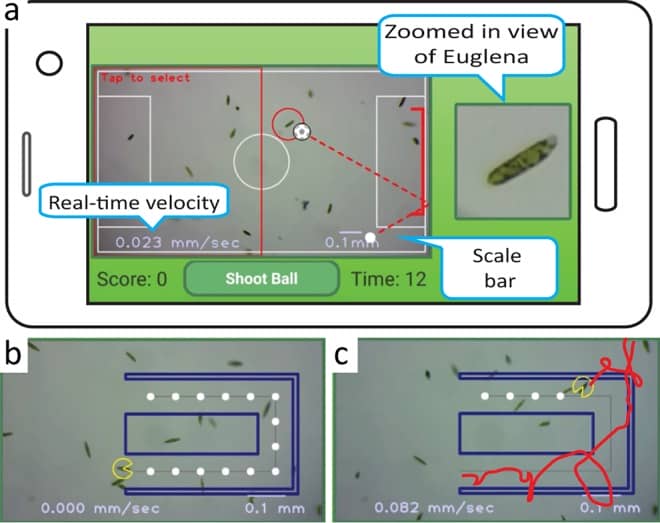If there’s anything better than learning about new things and technology, it is learning about them while having fun! A Stanford bioengineer certainly had this in mind, as he created a fascinating tool for kids to understand the micro-cosmos using their smartphones.
The app is called “LudusScope”, which combines a smartphone with a 3D printed microscope, giving kids or anyone else for that matter, the liberty to view, admire and observe the light-seeking microbes. The sense of inquisitiveness and the wonder of discovery is aroused in the young ones as they can use the microscope to observe tiny light-seeking euglenas, the single-celled flagellate eukaryotes.
“Many subject areas like engineering or programming have neat toys that get kids into it, but microbiology does not have that to the same degree. The initial idea for this project was to play games with living cells on your phone. And then it developed much beyond that to enable self-driven inquiry, measurement and building your own instrument.”
https://www.youtube.com/watch?v=RaNO_SHVG1w
The app is called LudusScope, which comes from the Latin word “Ludus,” meaning “game,” “play,” or “elementary school.” The LudusScope helps in creating an interactive environment where a platform is set up for the eukaryotes to swim freely. These eukaryotes are encircled by four LEDs, which control the floating direction of the microbes using a joystick connected to the LEDs.
“On the phone, children can run a variety of software that overlay on top of the image of the cells. One looks like the 1980s video game Pac-Man, with a maze containing small white dots. Kids can select one cell to track, then use the LED lights to control which direction the cell swims in an attempt to guide it around the maze and collect the dots.
Another game looks like a soccer stadium. Kids earn points by guiding the Euglena through the goal posts. Other non-game applications provide microscope scale-bars, real-time displays of swimming speed or zoomed-in views of individual cells. These let kids collect data on Euglena behavior, swimming speed and natural biological variability.”
https://www.youtube.com/watch?v=Nu5_F31NRcc
The device’s purpose is to encourage children to build, observe, interact and explore new things in life. But Riedel-Kruse revealed that initially the project was not directed towards the children. It started as the part of a Stanford Bioengineering Class, and many intended to keep it that way. He added,
“I thought the interactive cell stimulation and the resulting games was the coolest thing but the teachers and students didn’t necessarily agree. What they were more excited about is the more basic things like the ability to build your own instrument, that multiple people can see the screen at the same time and that you can select and track individual cells.”
https://www.youtube.com/watch?v=mzHY0QjJ3mQ
Riedel-Kruse hopes that this technology could be made available in the market sometime next year, although the exact plan is not clear as yet.
You can get further information by reading the full report titled “LudusScope: Accessible Interactive Smartphone Microscopy for Life-Science Education.”

